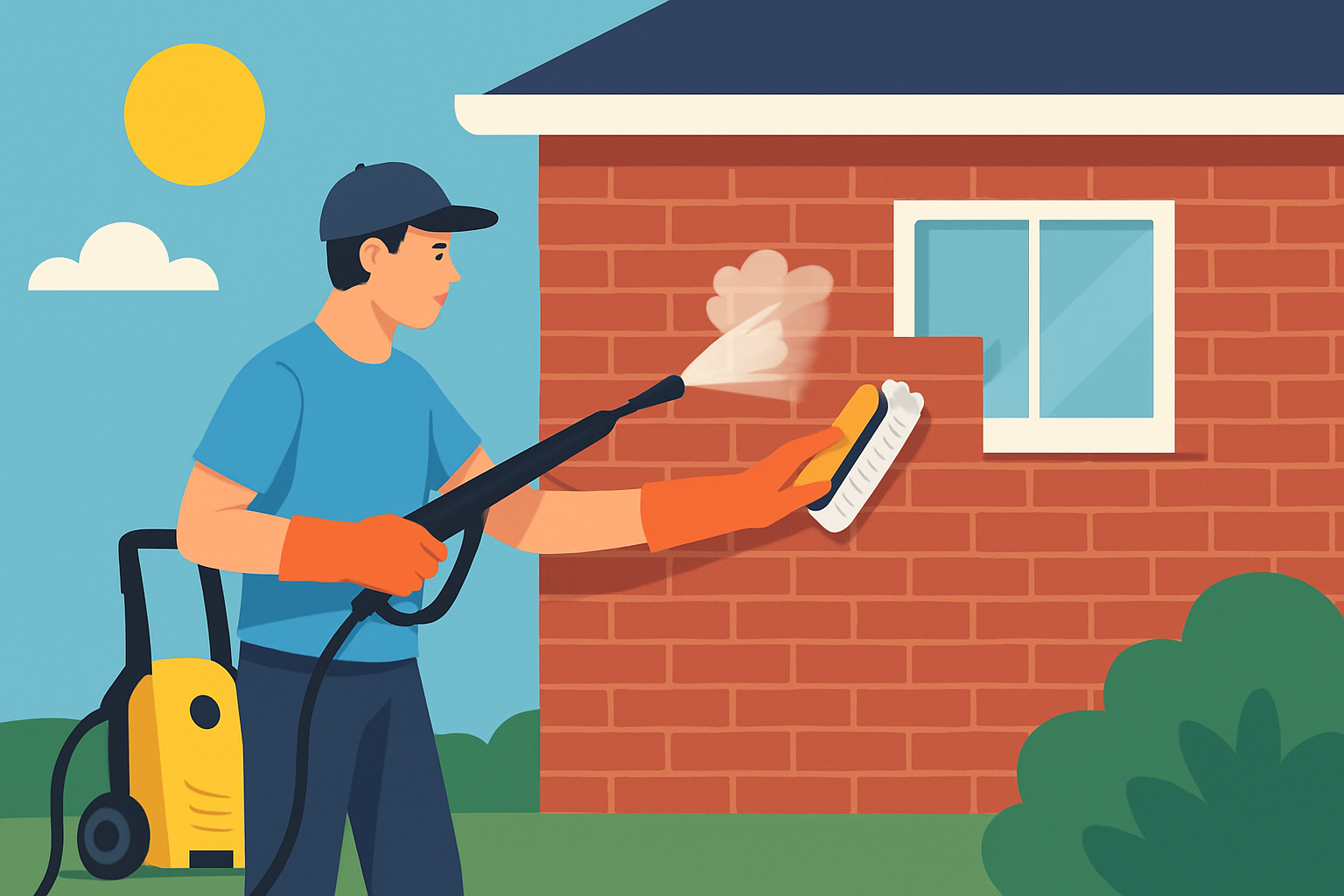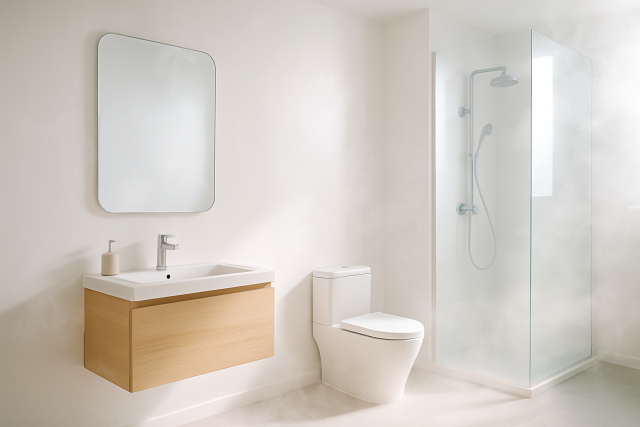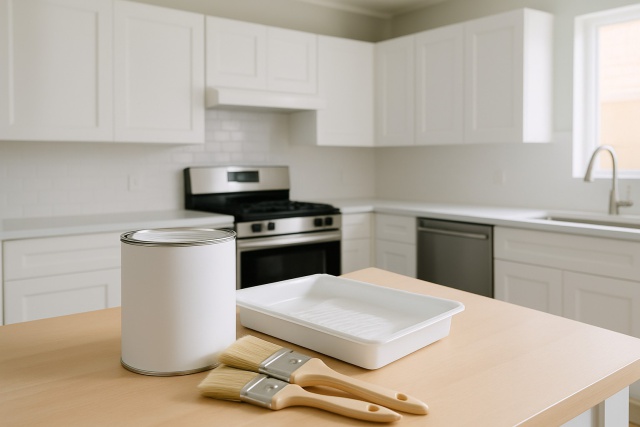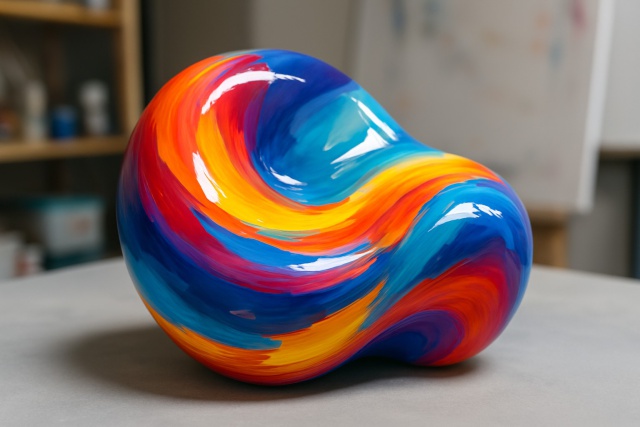Painting a Brick House White Without Ruining the Look

Painting a brick house white can truly transform its curb appeal and give it a fresh, clean and modern vibe that’s hard to beat. This kind of makeover usually pays off nicely but demands a careful eye and the right materials so you don’t lose the brick’s natural charm and texture. Done wrong, painting can peel, crack or look fake—like a mask hiding the brick’s one-of-a-kind character. Following a clear step-by-step guide makes all the difference.
Getting to Know Your Brick Different Types and Porosity Explained
You need to figure out the type of brick you are dealing with. Bricks vary in texture and porosity and in treatments or coatings they may have had. These details affect how the paint soaks in and shape the final look. Pinning down whether your brick is natural, painted, glazed, or concrete will save you headaches by guiding you toward the right prep steps and paint products.
- Natural clay bricks tend to be quite porous which means they soak up paint like a sponge while still letting the material breathe—a bit like your favorite old sweater that’s cozy but not suffocating.
- Painted bricks might be hiding old coatings that have a mind of their own and often cause new paint to have trouble sticking. A good strip or a bit of sanding usually saves the day.
- Glazed bricks come with a smooth sealed finish that’s not exactly paint’s best friend. They usually call for special primers to get things to stick properly.
- Concrete bricks, being denser and less porous, respond best to primers made just for concrete. Think of it as giving them the right kind of gourmet meal to prep for painting.
- Differences in porosity affect not just how much paint you’ll need but also how quickly it decides to dry—sometimes fast, sometimes fashionably late.
- Previous treatments like sealants or stains can be sneaky and often block paint from bonding well, so it pays to be cautious.
- Keeping an eye on the mortar’s condition is key since it plays a big role in how evenly your paint glides on and how long the whole thing sticks without flaking.
- Each brick holds moisture in its own quirky way which can lead to bubbling or peeling if that sneaky dampness isn’t dealt with before painting. It’s better to tackle it upfront than regret peeling paint later.
Key Materials and Tools You will Need for Painting a Brick House White
Picking quality products designed for masonry usually does wonders for paint adhesion, breathability and durability. Having the proper tools on hand is your ticket to applying paint neatly and working smarter whether you’re maneuvering around pesky tight corners or covering broad surfaces.
- A top-notch masonry primer made specifically for porous surfaces that gives paint something to really cling to and helps cut down on annoying peeling.
- A breathable and flexible white masonry paint that lets moisture sneak out and prevents long-term damage.
- A trusty paint sprayer for speedy and even coverage on big brick expanses plus rollers with a thick nap to handle the texture like a pro.
- Sturdy paint brushes perfect for cutting in and adding fine details around windows, doors and tricky mortar joints.
- Surface cleaners such as trisodium phosphate (TSP) or commercial mold and mildew removers to get your brick prepped just right.
- Heavy-duty sealants made to shield your paint job from water sneaking in after application.
- Sandpaper or wire brushes to whisk away loose paint and smooth out rough spots.
- Drop cloths and painter’s tape to save your floors and furniture from becoming unintentional canvases.
- Safety gear like gloves, masks and goggles to keep you safe from the less pleasant side of prepping and painting.
How to Prepare Brick for Painting, Step by Step (Because Let us Face It, You Want It Done Right)
Preparation is absolutely key if you want a paint job that stands the test of time, especially when you’re dealing with brick. Brick surfaces collect dirt and mildew and show wear as the years go by. This makes it a challenge for paint to stick properly. Spending quality time cleaning, repairing and priming thoroughly sets the stage for a smooth surface. It also helps your fresh white finish keep its just-painted glow longer.
Give the brick and mortar a good once-over for any cracks or damage that could spell trouble down the road like paint glitches or unwanted moisture sneaking in.
Clean the surface thoroughly using a power washer or a scrub brush with masonry cleaner or diluted trisodium phosphate. This will tackle dirt, algae and stains like a pro.
Patch up any cracks or tired mortar joints with the appropriate mortar or patching compound. Then be patient and let it cure fully no shortcuts here.
Scrape or sand away any loose or peeling paint to make sure you’re working with a stable and even canvas ready for a fresh coat.
Slather on a breathable masonry primer over the clean dry brick to seal porous spots and give your paint job the best chance to stick. Carefully follow the product’s drying time instructions.

How to Pick the Perfect Paint and Application Techniques That Actually Work
White paints aren’t all created equal, especially when you’re dealing with brick surfaces. Picking a breathable, flexible masonry paint is key to avoid the dreaded moisture trap that leads to peeling and bubbling—nobody wants that headache. It’s not just about the paint formula—the way you slap it on plays a big role too, influencing the final look and how much of the brick’s natural texture gets to shine through.
- Opt for high-quality masonry paint specially formulated for bricks. These let moisture escape which helps prevent any nasty damage down the line.
- Choose paints that offer some flexibility so they can handle the natural expansion and contraction of bricks without cracking.
- Avoid thick, heavy paints that completely seal up the brick pores. They tend to look a bit fake and often peel off over time.
- For larger areas, sprayers work best. Rollers or brushes are ideal for getting into mortar lines and tricky spots.
- Keep the authentic brick texture alive by brushing gently between the mortar joints instead of applying thick layers all at once. Also, give each coat enough time to dry.
- Apply thin, even coats and allow each one to dry fully. This is the key to a finish that looks sharp and lasts a long time.
Tips to Keep the Look While Boosting Curb Appeal (Because First Impressions Count)
Many homeowners lean towards the bright clean vibe of white brick but still want a touch of the original brick's natural rustic charm. Techniques like whitewashing and limewashing lay down a semi-transparent veil that lets the brick's texture and subtle color variations peek through. Layering the paint or targeting specific sections of the brick or mortar joints can amp up the authentic feel and add curb appeal.
- Give whitewashing or limewashing a shot if you want a semi-transparent coat that brightens up the brick but still lets its natural texture peek through. It is like giving your wall a soft glow without smothering its character.
- When painting, consider going selective by focusing on mortar joints or smaller patches. This can create charming accents instead of slapping color all over and losing that authentic vibe.
- Experiment with stains or lighter translucent finishes instead of heavy paint. They preserve more of the brick's original color and let it breathe, which brings a nicer lived-in feel.
- Mix things up by combining paint finishes like matte and satin. It adds subtle depth and dimension, keeping things from looking flat or lifeless because nobody wants dull walls.
- And a little word to the wise: always test these tricks on hidden spots first. Better safe than sorry so you can make sure the look truly jives with your style before going all in.
Typical Challenges and Some Tried-and-True Ways to Keep Them at Bay
Painting brick comes with its own set of challenges that can quickly throw a wrench in your project if they aren’t handled just right. A common headache is moisture getting trapped beneath the paint, which often leads to that frustrating bubbling and peeling. You might also end up with uneven color if the paint goes on inconsistently, or layers that basically smother the brick’s natural texture.
- Moisture trapped underneath a paint layer that doesn’t breathe often spells trouble and leads to bubbling and flaking. Going for breathable masonry paint and giving the surface a proper prime job is the way to go.
- Before you even think about picking up that brush, make sure to clear away every bit of dirt and mold and loose paint. It’s a step you don’t want to skip if you’re after a smooth long-lasting finish.
- When it comes to painting, less really is more: apply thin even coats instead of thick slops. This not only helps prevent cracking but keeps the brick’s character intact.
- Choose your painting days wisely—mild dry weather is your best friend here. Avoid painting under blazing sun rain or high humidity because those conditions can mess with drying and curing times.
- Don’t forget to stir the paint regularly and keep your brush or roller work consistent. Nothing ruins a project faster than uneven color patches.
- Finally, if you spot any damaged mortar or brick, tackle those repairs before painting. It is a small upfront effort that pays off big time by helping your paint job stick around longer.
Tips for Long-Term Care and Maintenance Because Keeping It Going Matters
To keep your freshly painted brick house white looking its absolute best for years to come, regular maintenance is key. Giving it a good clean every now and then helps stop dirt from piling up like unwanted guests. Catching paint damage early can save you from headaches down the line. A little touch-up here and there goes a long way—trust me, it is much better than dealing with major repairs later. And don’t underestimate the power of sealants because they act like a trusty shield against harsh weather and relentless UV rays.
- Give your painted brick a gentle once-over with a mild detergent and soft brushes now and then. This helps shake off dirt without messing up the paint.
- Take a quick peek at your bricks twice a year for peeling, cracking or unexpected moss. Tackle those issues promptly before they get out of hand.
- Every few years reapplying masonry sealants boosts moisture resistance and extends your paint's life.
- Don’t let tiny chips or scratches slide by. Touching them up as soon as you spot them can save you from bigger headaches down the road.
- Protect your painted brick from too much water by keeping gutters clear and landscaping smart to direct moisture away.
- When picking paint or coatings, choose ones with UV resistance or blockers because they’re like sunscreen for your bricks and help keep the colors vibrant under the sun's glare.





